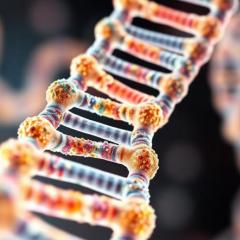 Scientists at The University of Queensland's Diamantina Institute (UQDI) and Monash University have made a breakthrough in understanding the high-risk genes behind people’s development of rheumatoid arthritis.
Scientists at The University of Queensland's Diamantina Institute (UQDI) and Monash University have made a breakthrough in understanding the high-risk genes behind people’s development of rheumatoid arthritis.
For the first time, this understanding provides scientists with a tool to directly analyse immune cells responsible for the development of RA and how their behaviour changes after treatment. These findings have been published in the Journal of Experimental Medicine.
The autoimmune disease, characterised by chronic inflammation of the joints, impacts 1 per cent of the Western population and mostly people aged from 50-75 years.
Arthritis Queensland Chair of Rheumatology at UQ Diamantina Institute Professor Ranjeny Thomas said people with high-risk genes (HLA) were predisposed to rheumatoid arthritis.
“HLA genes influence the way a person’s immune cells respond to an individual’s own body or deal with infections,” Professor Thomas said.
“Some people inherit HLA genes that put them at higher risk of the disease and smoking makes it even more likely for them to develop rheumatoid arthritis-specific antibodies called anti-CCP.”
Anti-CCP antibodies measure a response of the immune system towards a change in the body’s proteins (known as antigens). Smoking is known to make these rheumatoid-arthritis specific antibodies more likely.
Jamie Rossjohn, Professor at Monash University and Professor Thomas, set out to investigate how high-risk HLA molecules and antigens interact to cause RA.
They found that antigens involved in the development of RA fitted into high-risk HLA molecules, like a hand in a glove, but normal self antigens wouldn’t fit.
This means the immune system of RA patients only detects changed proteins and not normal self antigens.
The researchers found that immune cells in patients with RA lacked the usual control mechanisms to prevent runaway inflammation.
Stephen Scally, a PhD student from the Rossjohn lab and Soi Cheng Law, a PhD student within the Thomas lab, worked together to solve the puzzle of the structure of the molecules and to perfect a technique using patient samples to understand what goes wrong with the immune cells in RA.
For the first time, this provides scientists with a tool to directly analyse immune cells responsible for the development of RA and how their behavior changes after treatment. These findings open up a prospect of novel immune therapy, which specifically targets these cells in RA patients with high-risk HLA genes.



